Defenses for Spring 2023
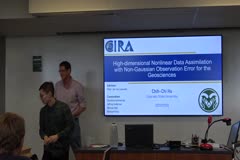
HIGH-DIMENSIONAL NONLINEAR DATA ASSIMILATION WITH NON-GAUSSIAN OBSERVATION ERRORS FOR THE GEOSCIENCES
July 26, 2023
Chih-Chi Hu
Data assimilation (DA) plays an indispensable role in the modern weather forecasting. DA aims to provide better initial conditions for the model by combining the model forecast and the observations. This can be described elegantly by Bayes theorem. However, directly applying Bayes theorem for atmospheric DA problems is practically unfeasible, due to the extremely high computational cost.…
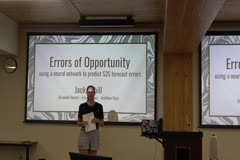
Errors of Opportunity: Using Neural Networks to Predict Errors in the Unified Forecast System (UFS) on S2S Timescales
July 25, 2023
Jack Cahill
Making predictions of impactful weather on timescales of weeks to months (subseasonal to seasonal; S2S) in advance is incredibly challenging. Dynamical models often struggle to simulate tropical systems that evolve over multiple weeks such as the Madden Julian Oscillation (MJO) and the Boreal Summer Intraseasonal Oscillation (BSISO), and these errors can impact geopotential heights,…
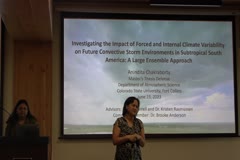
Investigating the Impact of Forced and Internal Climate Variability on Future Convective Storm Environments in Subtropical South America: A Large Ensemble Approach
June 15, 2023
Anindita Chakraborty
Subtropical South America (SSA) has some of the most intense deep convection in the world. Large hail and frequent lightning are just two of the hazards that profoundly affect people, agriculture and infrastructure in this region. Therefore, it is important to understand the future convective storm environments over SSA associated with climate change and how these large-scale environmental…
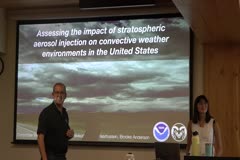
Assessing the impact of stratospheric aerosol injection on convective weather environments in the United States
June 08, 2023
Ivy Glade
Continued climate warming, as well as the slow development and implementation of climate mitigation and adaptation approaches, has prompted increasing research into the potential of proposed solar climate intervention (SCI) methods, such as stratospheric aerosol injection (SAI). SAI would reflect a small amount of incoming solar radiation away from the Earth to reduce warming due to increasing…
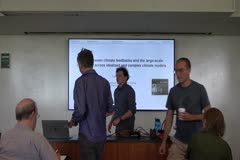
Links between climate feedbacks and the large-scale circulation across idealized and complex general circulation models
May 30, 2023
Luke Davis
The circulation response to anthropogenic forcing is typically considered in one of two distinct frameworks: One that uses radiative forcings and feedbacks to investigate the thermodynamics of the response, and another that uses circulation feedbacks and thermodynamic constraints to investigate the dynamics of the response. In this thesis, I aim to help bridge the gap between these two…
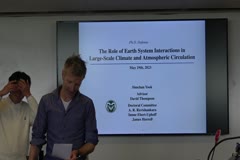
The Role of Earth System Interactions in Large-Scale Atmospheric Circulation and Climate
May 19, 2023
Shim Yook
The complex interactions among different components of the Earth system play a key role in governing the climate variability through various physical processes. For example, an interaction between the fluctuations in one component of the Earth system and associated variations in another component of the Earth system can either amplify or dampen the climate variability depending on the nature…
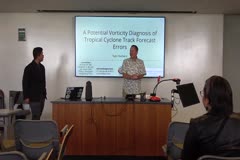
A Potential Vorticity Diagnosis of Tropical Cyclone Track Forecast Errors
May 08, 2023
Tyler Barbero
A tropical cyclone (TC) can cause significant impacts on coastal and near-coastal communities from storm surge, flooding, intense winds, and heavy rainfall. Accurately predicting TC track is crucial to providing affected populations with time to prepare and evacuate. Over the years, advancements in observational quality and quantity, numerical models, and data assimilation techniques have led…
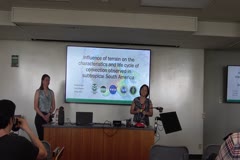
Influence of Terrain on the Characteristics and Life Cycle of Convection Observed in Subtropical South America
May 08, 2023
Marquette Rocque
Subtropical South America (SSA) is a hotspot for deep, intense convection that often grows upscale into large mesoscale convective systems (MCSs) overnight. The local terrain, including the Andes and a secondary feature known as the Sierras de Córdoba (SDC) are hypothesized to play a major role in the initiation, development, and evolution of convection in the region. Some satellite studies…
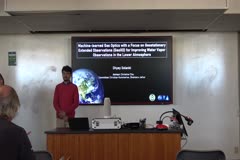
Machine-learned Gas Optics with a Focus on Geostationary Extended Observations (GeoXO) for Improving Water Vapor Observations in the Lower Atmosphere
March 21, 2023
Dhyey Solanki
In the grand scheme of the earth-atmosphere system, there are few constituents more vital and mysterious than water vapor. Vital because of its interwoven thermodynamic, radiative, and dynamic influence on the weather and climate of the planet, and mysterious because of our limited capacity in observing its time evolution in horizontal and vertical space. The advancements in the spectral and…
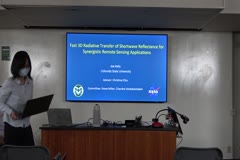
Fast 3D Radiative Transfer of Shortwave Reflectance for Synergistic Remote Sensing Applications
March 20, 2023
Joe Kelly
Marine stratocumulus clouds are a critical component of Earth’s radiation budget and remain a key source of uncertainty in climate projections. Better representing these clouds and their interactions with radiation, precipitation and aerosols in models necessitates observations of three-dimensional (3D) cloud fields. While passive satellite observations provide critical information on cloud…
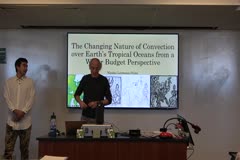
The Changing Nature of Convection Over Earth’s Tropical Oceans from a Water Budget Perspective
February 28, 2023
Nicolas Leitmann-Niimi
Consistent spatiotemporal hydrologic measurements over Earth’s oceans are only feasible with satellite remote sensing. The water budget components inside of an atmospheric volume are precipitation (P), evaporation (E) and horizontal water vapor divergence (divQ). Physically, the sum of these components leaves a residual term: the amount of water vapor stored inside the atmospheric volume. A…
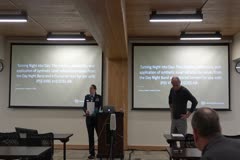
Turning Day into Night: The creation, validation, and application of synthetic lunar reflectance values from the Day Night Band and Infrared Sensors for use with JPSS VIIRS and GOES ABI.
February 15, 2023
Chandra Pasillas
Satellite remote sensing revolutionized weather forecasting and observing in the 1960s providing a true birds eye view of the weather beyond what could be achieved from balloon and aircraft reconnaissance. With the advances in observing came the desire for more capability and the understanding of the Earth system and radiation budget grew rapidly. The most popular imager products come from…
